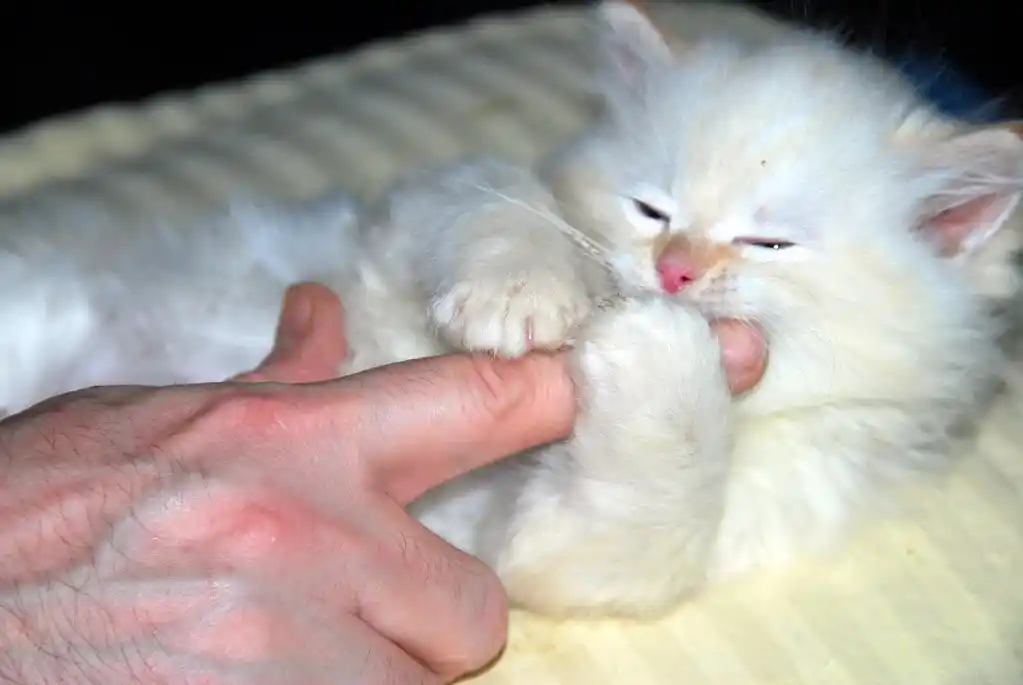How to stop play aggression in cats
Playing with your cat should be a bonding experience full of laughter and delight rather than conflict or frustration. What happens, however, when your animal companion begins to act somewhat aggressively? Developing a harmonic connection with your cat depends on knowing how to quickly terminate playful aggressiveness. Let’s explore practical solutions on how to Stop Playtime Aggression in cats to transform aggressive play into peaceful interaction.
What Is Play Aggression in cats?
Play aggression refers to overly rough or hostile behavior during playtime. It’s common in kittens and young cats as they learn social cues and proper play boundaries. While some aggression is normal, consistent biting, scratching, or stalking during play can be problematic if left unaddressed.
Why Playtime Aggression Happens in Cats
Understanding the root causes of play aggression can help you tackle the problem effectively.
1. Lack of Socialization
Cats not exposed to proper socialization, especially during kittenhood, often fail to learn how to play gently.
2. Overstimulation
Fast-paced or overly long play sessions can overstimulate your cat, triggering aggressive behavior.
3. Inadequate Play Outlets
Without enough physical and mental stimulation, your cat may release pent-up energy during play in an aggressive manner.
4. Stress or Anxiety
Environmental changes—such as a new pet or loud noises—can cause your cat to act out during play.
How to Control Play Aggression in Cats?
Controlling the play aggression in cats needs consistency, patience, and appropriate strategies. Here’s how you may start to take charge:
Personal Story
When I adopt a cat, I suffered with aggressive biting during play. I didn’t realize my hands became her favorite “prey,” which encouraged the behavior. After learning how to redirect her focus using toys and setting clear boundaries, her behavior improved significantly.
Understanding Your Cat’s Play Behavior vs. Aggression
Play behavior and aggression can look similar, but knowing the difference is key.
Signs of Aggressive Play
Biting vs. Gentle Mouthing
Aggressive biting often breaks the skin or causes pain, whereas mouthing is softer and doesn’t hurt.
Excessive Scratching or Clawing
Aggressive scratching involves prolonged claw contact, while playful swats are quick and controlled.

Strategies to Instantly Stop Playtime Aggression
Let’s dive into actionable techniques that can stop playtime aggression in its tracks.
Personal Experience: How I Stopped my cat Aggression
The day I introduced wand toys to Luna was a game changer. By channeling her energy into a safe outlet, I noticed an immediate improvement in her behavior.

Effective Redirection Techniques
Using Toys to Shift Focus
Introduce interactive toys like wand teasers or laser pointers to divert your cat’s attention away from your hands or feet.
Introducing Safe Play Tools
Avoid using hands or feet as toys. Instead, use durable toys designed for rough play, like plush mice or feather teasers.
Setting Clear Boundaries
Consistent Rules for Hands-Free Play
Teach your cat that hands are not toys by never encouraging play with them, even in jest.
Discouraging Aggressive Behaviors Gently
If your cat becomes too aggressive, immediately stop playing and ignore them to show that rough play has consequences.
Proper Use of Timeouts
When and How to Use Timeouts Effectively
If your cat continues to act aggressively, calmly place them in a quiet, safe space for a few minutes. This helps them reset and associate their behavior with a temporary loss of attention.
The Role of Positive Reward System
Rewarding Calm Play Behaviors
Reward your cat with food, compliments, or additional playtime whenever they play gently to help to promote the good behavior.
Long-Term Solutions for Playtime Aggression
Beyond instant fixes, implementing long-term strategies ensures that play aggression doesn’t become a recurring problem.
Providing Regular Exercise
Benefits of Daily Play Sessions
Structured playing lessens the probability of hostile outbursts and helps your cat burn off energy.
Choosing the Right Toys for Active Cats
Invest in motion-activated toys or puzzle feeders to help your cat’s hunting instincts be stimulated.
Socializing Your Cat
Gradual Exposure to New People or Pets
Slowly expose your cat to new environments to boost their confidence and help to lower anxiety-driven aggressiveness.
Improving Interactions Through Training
Clicker training can be a fun and effective way to teach your cat good play behaviors.
Enriching Your Cat’s Environment
Climbing Structures, Scratching Posts, and More
Set up cat trees, scratching posts, and other interactive objects to keep your cat both physically and mentally busy.
Creating a Stress-Free Zone
Set up a calm space where your cat could withdraw from stress or overload.
Conclusion
Stopping playtime aggressiveness in cats calls for a combination of proactive tactics, tolerance, and patience. From long-term behavioral training to redirection strategies, these ideas may help you enjoy relaxed and exciting play sessions with your cat buddy.
Remember, every cat is different hence the method that suits you may need some try and error. Keep consistent; aggressive play will be a thing of the past shortly.
Have you successfully stopped playtime aggression in your cat? Share your tips with us in the comments below!
For more tips on kitten care, check out our other articles:
- Does a Cat’s Coat Color Really Predict Their Personality?
- How Do You Know Your Cat is Bonded?
- How to Handle a Clingy Cat | Managing Clingy Cats
The images are taken from Flikr.com

